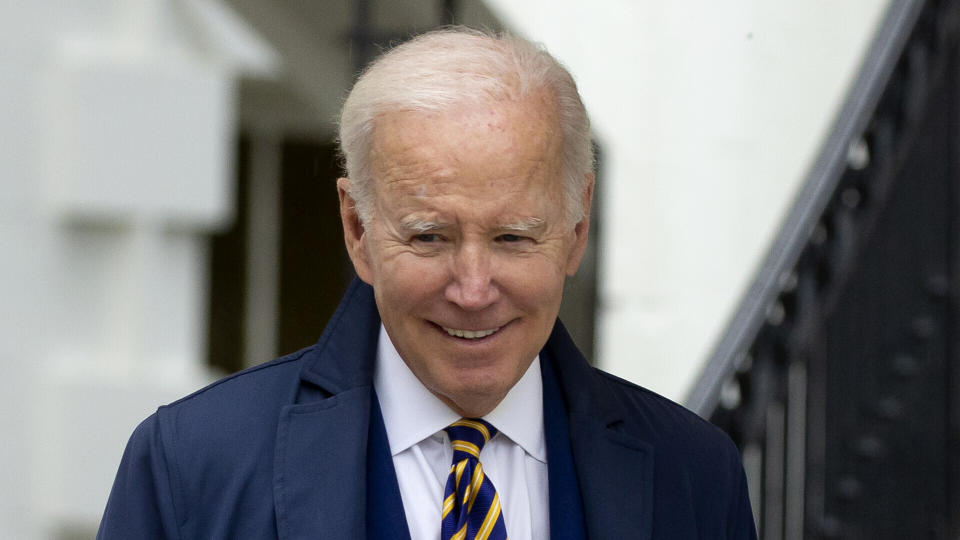Biden’s Student Loan Forgiveness Goes to the Supreme Court Today — Here’s What You Need To Know

Feb. 28 is the day the fate of President Joe Biden’s student loan forgiveness program will begin to play out, as the Supreme Court will hear arguments concerning it. The end result of these hearings — the judgment — will affect millions of American borrowers.
Student Loan Forgiveness: Biden’s ‘Fresh Start’ Plan Deemed $34 Billion Success — How It Benefits Borrowers
Student Loan Forgiveness: 16 Million People Have Been Approved, But Will They Actually Get Relief?
While the Supreme Court’s decision is widely expected to be released in June, the hearing day has been anxiously awaited by borrowers.
In November 2022, the White House reported that 26.3 million student loan borrowers had applied or were deemed automatically eligible for relief under the forgiveness program. Further, the White House stated that 16.5 million fully approved applications had been sent to loan servicers for discharge. The Biden administration estimated that more than 40 million borrowers would qualify for the debt relief program, with nearly 90% of the benefits of the relief going to borrowers earning less than $75,000 per year.
For now, the program has been halted. The administration issued a loan payment pause extension until June 30, to allow for the Supreme Court to rule on the case. The lawsuits challenging the program hinge on the argument that it is “unconstitutional” and that the HEROES Act — enacted in the wake of the Sept. 11 attacks — does not provides authority to grant relief from student loans. Six Republican-led states claim the enactment of Biden’s program would harm them financially, per CNN.
When the program was announced in August 2022, the Justice Department said in a brief of support regarding the program that the HEROES Act “authorizes the Secretary to address the financial hardship arising out of the COVID-19 pandemic by reducing or canceling the principal balances of student loans for a broad class of borrowers.”
However, Judge Mark. T. Pittman of the U.S. District Court for the Northern District of Texas argued — in his Nov. 10 decision — that the program was an unconstitutional exercise of Congress’s legislative power and must be vacated.
“In this country, we are not ruled by an all-powerful executive with a pen and a phone. Instead, we are ruled by a Constitution that provides for three distinct and independent branches of government.”
Protests are planned in front of the court tomorrow, including a “People’s Rally for Student Debt Cancellation.” Co-sponsors of the rally include the Center for Responsible Lending (CRL), the Debt Collective, the Student Borrower Protection Center (SBPC), the NAACP, MoveOn, the National Consumer Law Center (NCLC) and the National Education Association (NEA), as GOBankingRates previously reported.
CNN reported that if the Supreme Court strikes down Biden’s student loan forgiveness program, “it could be possible for the administration to make some modifications to the policy and try again — though that process could take months.”
Meanwhile, the Biden administration and the Department of Education have been working in parallel on changes pertaining to income-driven repayment plans, which could alleviate borrowers’ financial burdens. The Congressional Budget Office (CBO) estimated that the relief program would cost $400 billion.
Take Our Poll: What Are Your Financial Priorities in 2023?
More: Regardless of Student Loan Forgiveness Outcome, New Regulation Will Keep Interest in Check
If enacted, the forgiveness program would grant up to $10,000 in federal student debt relief for borrowers whose income in 2020 or 2021 was less than $125,000 (or $250,000 for households). And for Pell Grant recipients, that amount increases to up to $20,000 in student loan cancellation. If you are a dependent student, your eligibility is based on your parental income. Most federal loans are eligible, including undergraduate and graduate direct loans, parent PLUS and grad PLUS loans, consolidation loans, Federal family education loan (FFEL) program loans held by the Department of Education, Perkins loans held by the Department of Education and defaulted loans, according to studentaid.gov.
More From GOBankingRates
This article originally appeared on GOBankingRates.com: Biden’s Student Loan Forgiveness Goes to the Supreme Court Today — Here’s What You Need To Know
